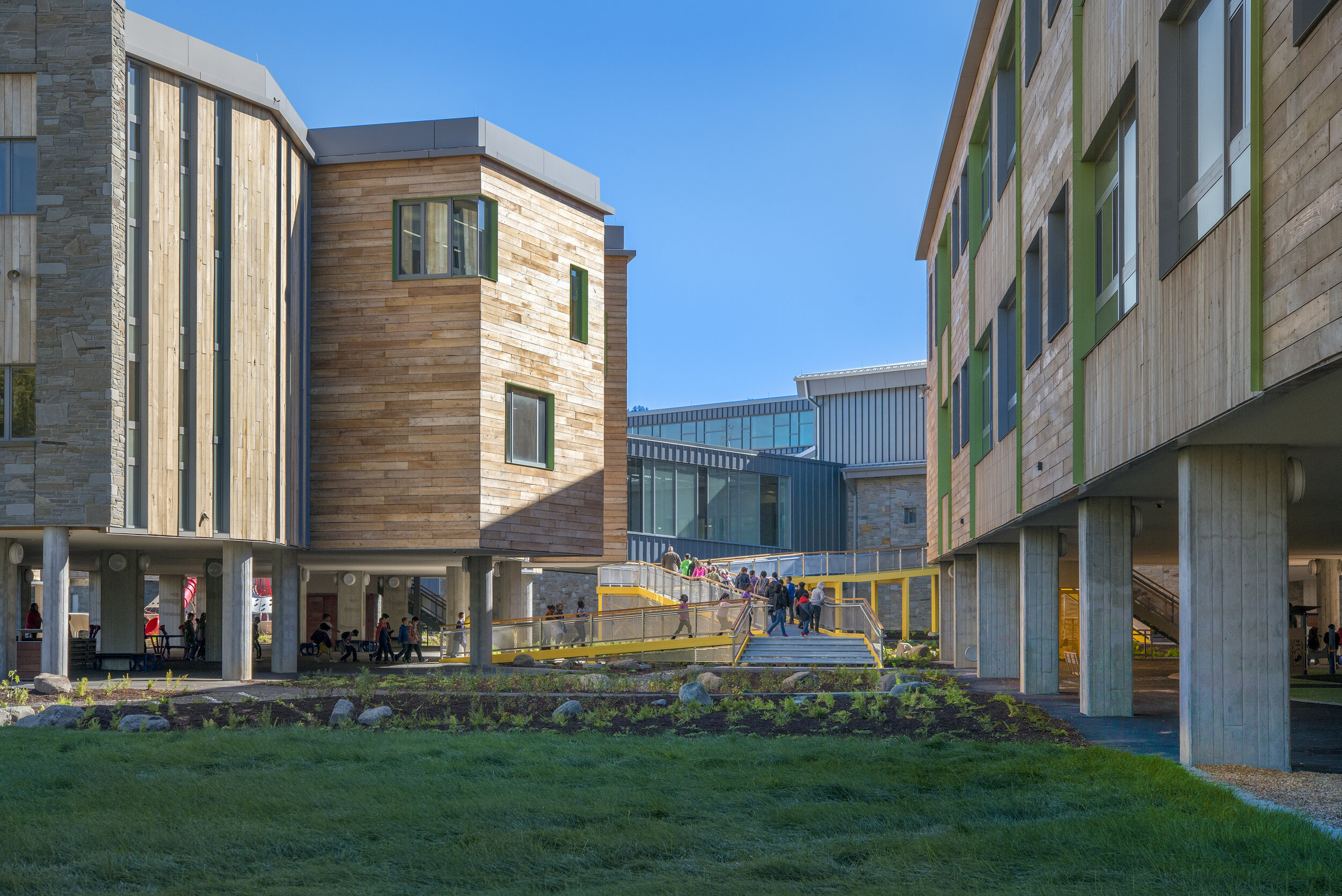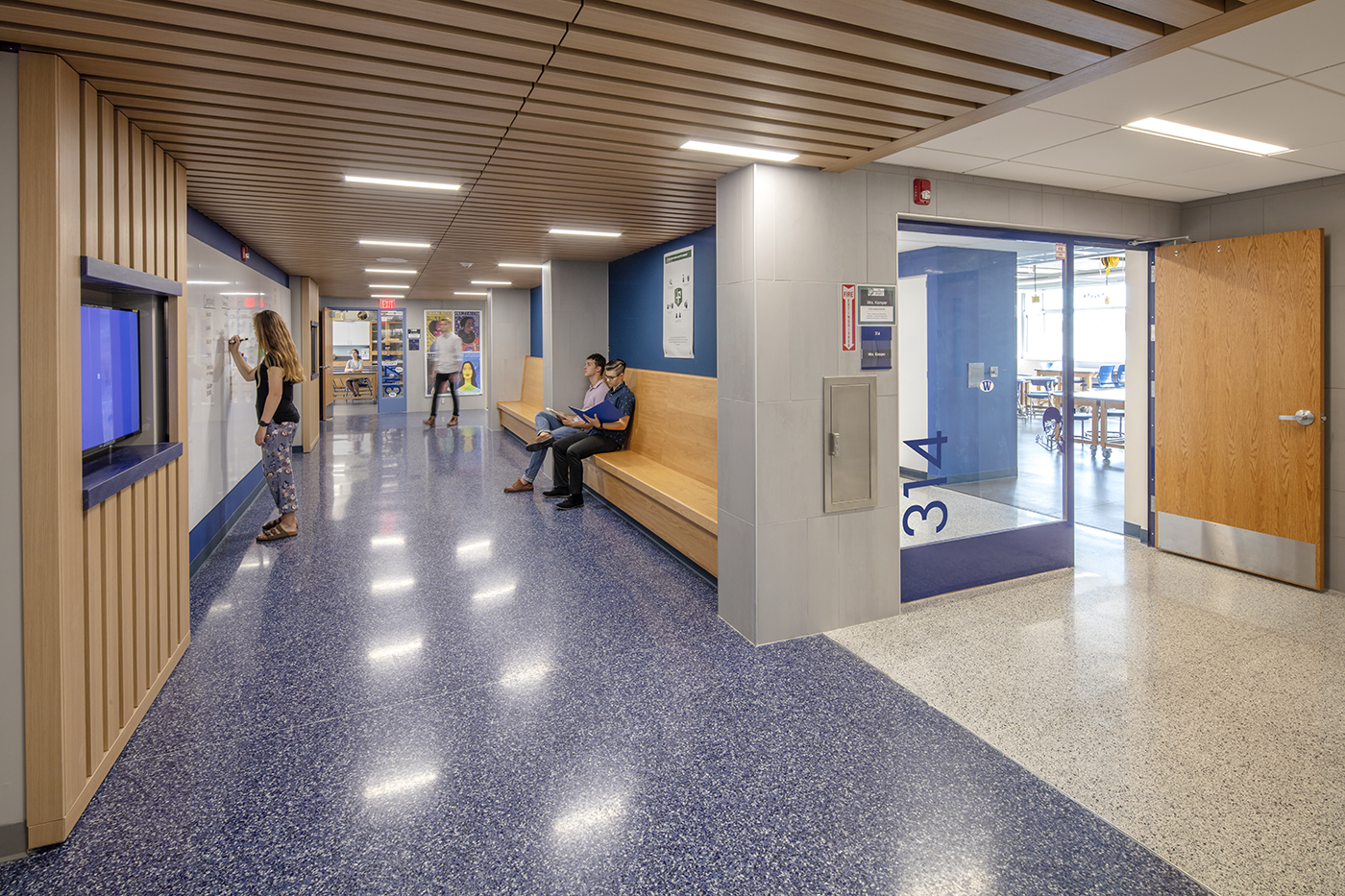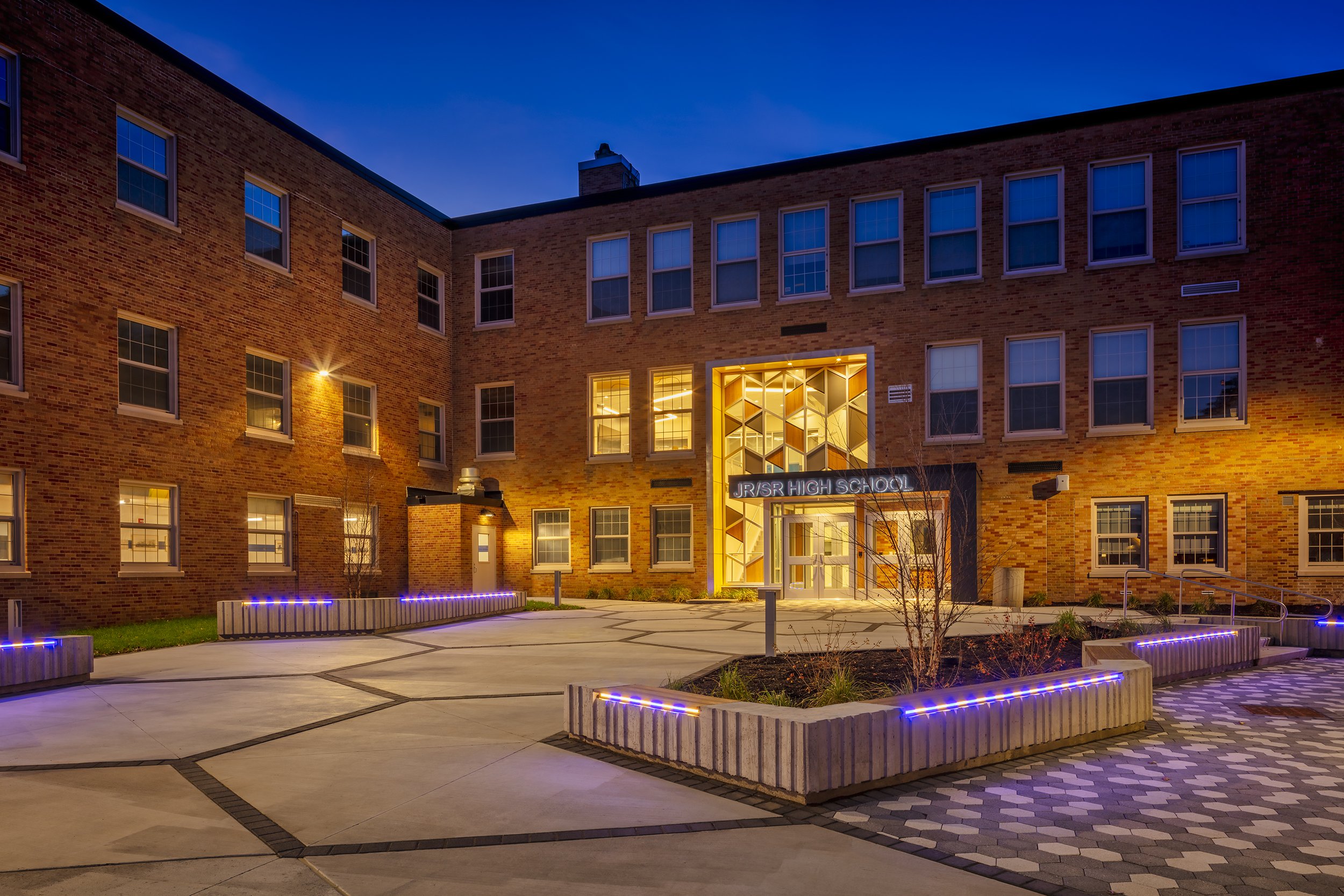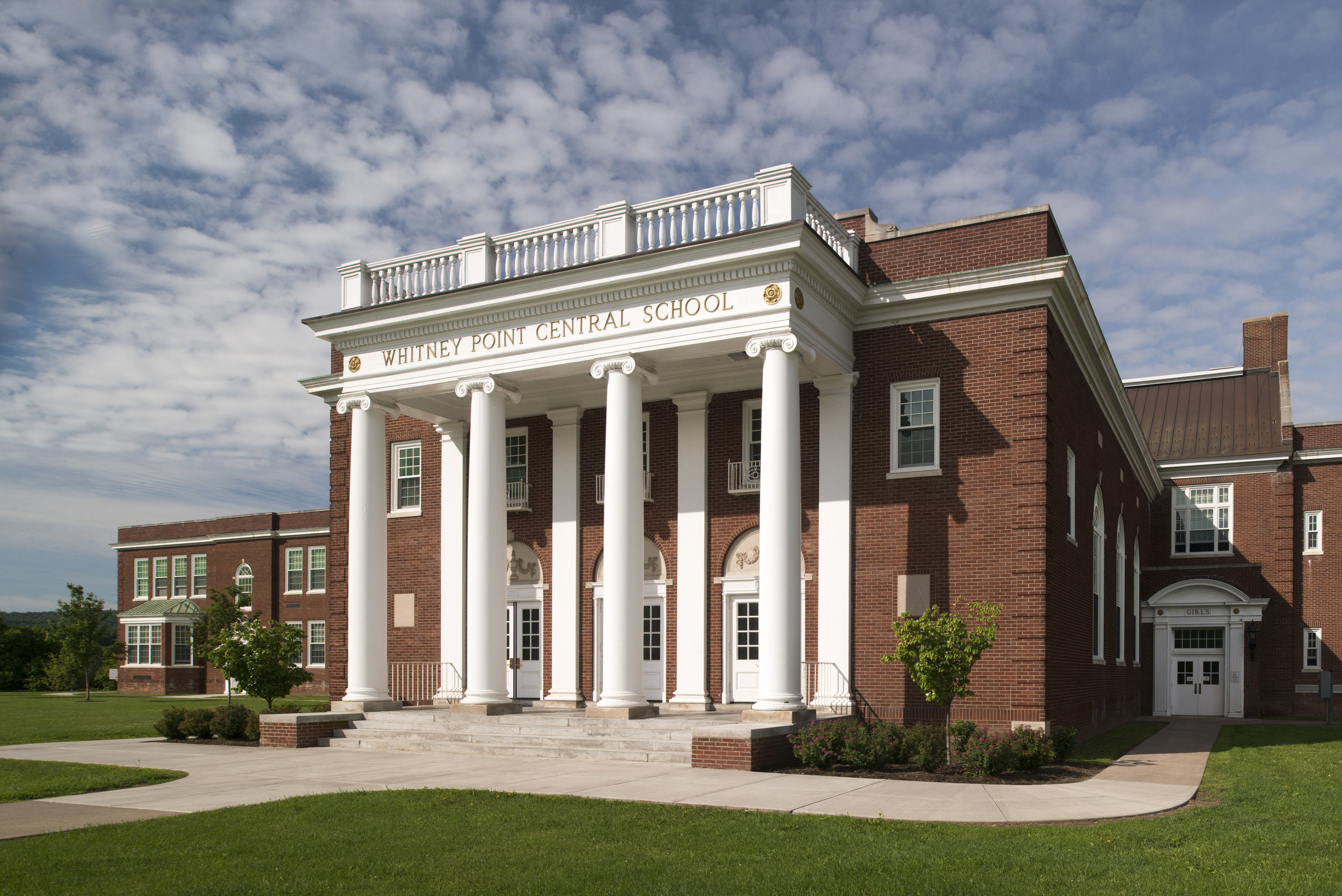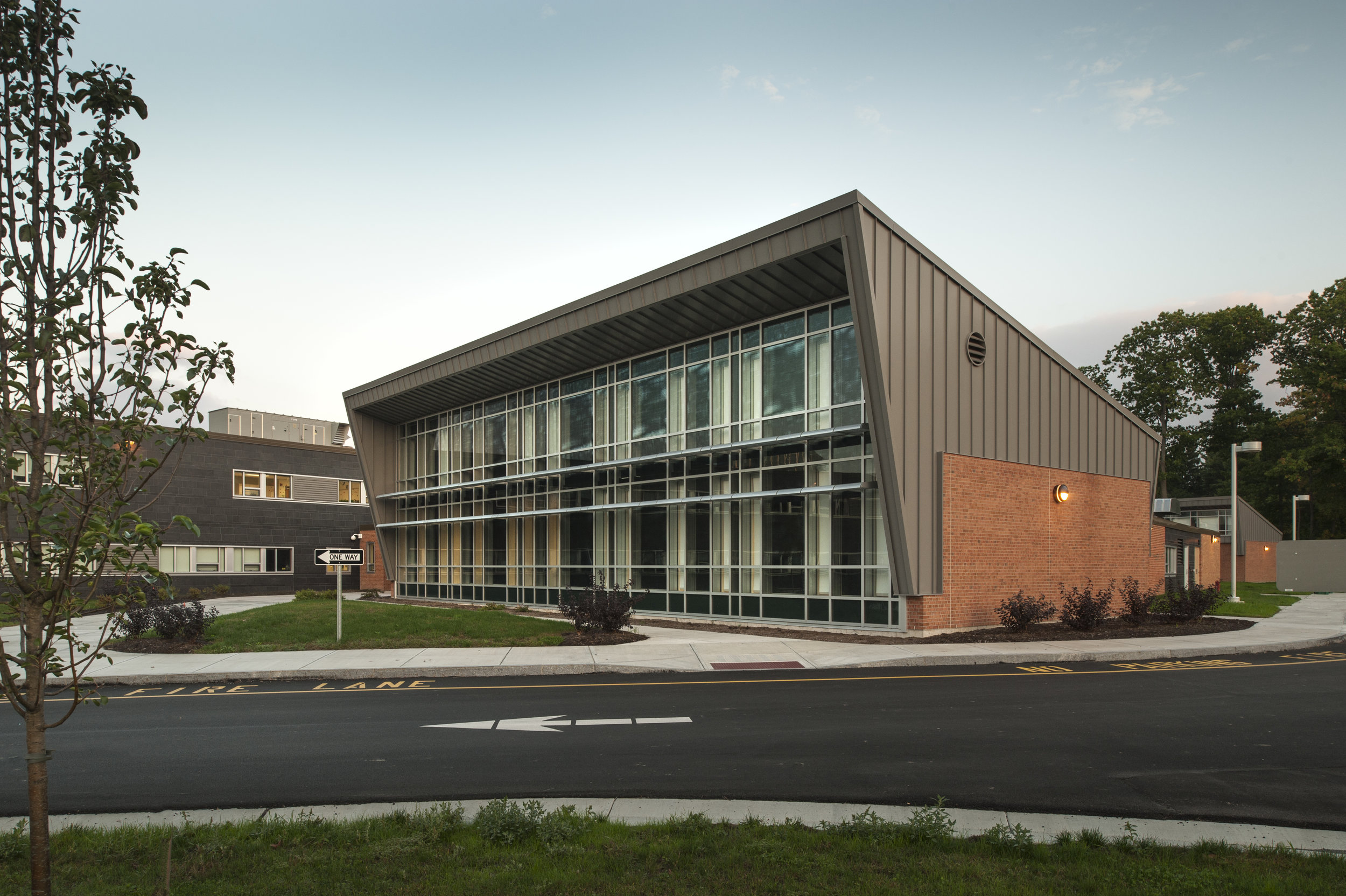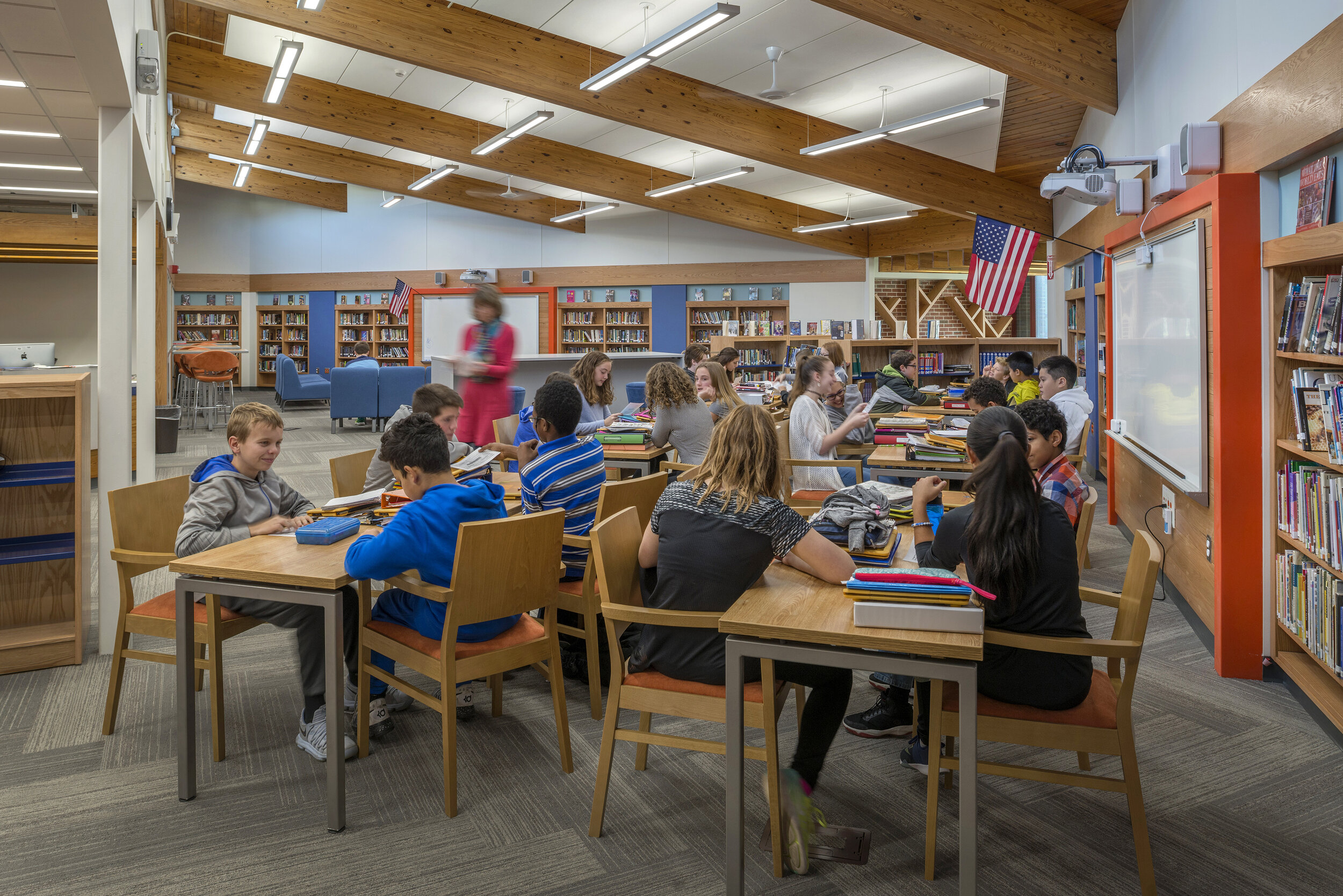NEW MACARTHUR ELEMENTARY SCHOOL.
BINGHAMTON CITY SCHOOL DISTRICT
Redefine what an urban elementary school can be, restore and revitalize the surrounding neighborhood and create a deeply sustainable and resilient building and site.
In 2011, the existing MacArthur Elementary School was destroyed when the Chenango and Susquehanna Rivers flooded due to Tropical Storm Lee and Hurricane Irene. The school was the heart of a vibrant city neighborhood and served an ethnically, socioeconomically and racially diverse student population. For the new MacArthur Elementary School, an interactive and inclusive design process was created. All stakeholders (community, neighbors, students, school staff and administration) were engaged.
Five overarching and qualitative vision statements were created and used as a litmus test for every design decision.
These statements allowed participants to contribute from their personal viewpoint and perspective to the final outcome.
We will heal our relationship with the river
We will respect the energy of the site
We will teach
We will create a net zero fossil fuel building
We will create a safe and welcoming environment for the community and students
The analysis of physical/non-physical flows affecting the site were overlaid and became armature for design.
The site was part of the larger MacArthur Park and was developed to allow all water coming to and falling on the site to travel naturally downslope and be treated on site. Rain gardens, bio-swales and indigenous vegetation are used to treat water anddemonstrate and teach about the hydrological cycle of the site. A community walking trail navigates through these features allowing students and community to learn, engage and enjoy these natural elements.
The building is organized with larger program elements (cafeteria, library, gym, etc.) sitting along higher ground to the southeast. These elements are above the newly established flood plain and relate in scale and articulation to the street and adjacent neighborhood. Three 2 -story classroom wings are raised on columns above the ground to allow the river to flood and recede naturally over time. The classroom wings are oriented to allow maximum daylight into the majority of the classrooms from the north and provide views of the ever changing river. This orientation allows optimal southern exposure for the photovoltaic panels on the roof.
Energy budgets, daylight and energy modeling were used in an interactive design process. Ground source heat pumps, exposed radiant concrete floors, on demand ventilation and robust controls for lighting and energy allow the building to model at a remarkable 10 EUI.
Locally sourced bluestone and black locust are the primary exterior materials, detailed to relate to the neighborhood and river sides of the building respectively. Development of interior spaces was influenced by student input that “learning takes place everywhere and all the time.” Informal collaborative areas and “in-between spaces” (third space) accommodate ever evolving pedagogy. Interior materials are simple, elegant and subtly color themed by grade level.
The new 129,000 SF MacArthur Elementary School is LEED Platinum certified.
Design Awards
2016 American School and University – William W. Caudill Citation
Awarded as the top PreK-12 entry in the 2016 American School and University Architectural Portfolio, the premier showcase celebrating the best in education design. “Wonderfully creative plan captures space around and under buildings with both seriousness and delight. Beautifully striated and punctured forms sit delicately between river and town.”—2016 jury
2016 American Institute of Architects (AIA) New York State Excelsior Award
The AIA New York State has a long history of showcasing the extraordinary work of New York architects. Instituted in 1968, the Design Award program celebrates, honors, and promotes excellence in design by New York State Architects for their exemplary work, creativity, and to enhance public interest in architecture. The Excelsior Award program showcases publicly funded projects from around the State which exemplify design and excellence in the public sector and provide a model of excellence for future state-funded building design
2016 American Institute of Architects (AIA) Central New York – Award of Excellence
AIA CNY’s highest honor for design excellence. The jury said: “This is architecture at its best. It engages both school and community stakeholders in a collaborative design process and achieved a highly creative learning environment while incorporating numerous and significant green design elements.”
Location: Binghamton, NY
Photos: John Griebsch Photography and Gabrianna Dacko Photography













